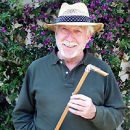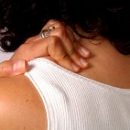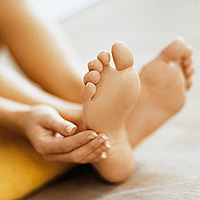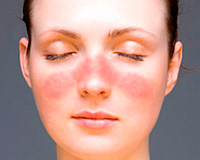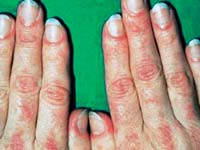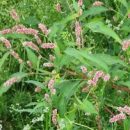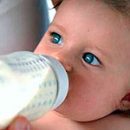Rheumatism is a chronic, wave-like current inflammatory disease, in which the connecting tissue is affected, especially the cordial-vascular system of the body. Significant, muscles, nervous system and other organs affected.
Content
Rheumatism
Rheumatism — Disease of children's age. More often
all sick 6—12-year-old children, very rare cases of the disease in
The current of the first 3 years of life. Adult rheumatism at 75—80% represents
a disease that began in childhood.
It is believed that rheumatism is caused by one of the varieties of the microbe
Streptococca. Repeated streptococcal pharyngitis, angina, and
Foci of chronic infection (inflamed almonds, apparent nose
sinuses, untreated teeth) allergenize the body, in connection with which any
acute disease can cause characteristic of rheumatism
Inflammatory phenomena. Therefore, rheumatism is called yet
infectious allergic disease.
The occurrence of rheumatism contributes to unfavorable household
Conditions, especially raw and cold premises, also matter
Physical and mental injuries and overvoltage transferred
Diseases, incorrect diet (leaf of carbohydrates during protein deficiency
and vitamins).
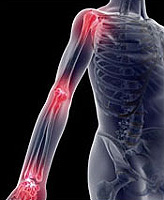
Rheumatism usually begins after 1—2 weeks after transferred
Angina, Scarletina, ORZ or other disease. The child becomes
sluggish, his appetite disappears, complaints about fatigue and
headaches. Temperature rises to 38—39°, The child sweats greatly.
Complaints on joint pain and in the heart of the heart, sometimes on pain
in stomach and heartbeat. Classic rheumatism is manifested in
inflammation of the heart and joints. Pains appear in the joints, they swell,
leather over affected joints warmer than in other areas. Usually
Large joints are affected: knee, ankle, elbow, fad.
As a rule, symmetric joints are affected. Pains are distinguished by volatime
character, in one joint, inflammatory phenomena disappear, in another —
Suddenly appear. After the start of treatment, the inflammatory process in
joints are eliminated for several days, in rare cases
preserved up to 2 weeks.
In some cases, children can only make rheumatism
Minor complaints of volatile joint pains, while
inflammatory phenomena do not arise at all.
Rheumatism in childhood can start and leak at all without
Inflammation of the joints, hitting this, mainly the heart. Outstanding
Russian pediatrician B. Kissel figuratively expressed that «Rheumatism licks
joints and bites heart».
Another sign of rheumatism in children is defeat
central nervous system, which is expressed in «Saint dance
Witt», or desire. Khorora usually develops slowly. Child
becomes easily excitable, capricious, unmanaged, touchy, due to
Every trifle enters the conflict, crying. Periods of depression
quickly replace with increased mood. Movement becomes clumsy
and unsure. Grimasi, limbs appear on the face, and sometimes all
The body is exposed to spontaneous and non-coordinated twitching.
The weakness of muscles is developing. Worsen handwriting, difficulties arise in
Food time (the child can rush food past the mouth, drop forks and spoons and
T. NS.), it becomes insensitive. Disorders may appear
Equilibrium.
After the disappearance of clinical symptoms, the child is still within
long time continues to remain emotionally unstable.
Reduced performance. Any mental overvoltage can
again cause aggravation of the disease.
As noted above, rheumatism is distinguished by wave-like
flow. Acute attacks of the disease (active phase) are replaced by intervals,
When active manifestations of rheumatism are absent (inactive phase).
Active periods can be repeated. Inactive phase usually lasts from
several months to several years. With unfavorable flow
rheumatism active periods follow one after another, as a result of
Child develop severe heart lesions in the form of damage
Cardiac valves (heart defects). In some cases rheumatism
limited to one or two attacks, not leaving behind
Significant heart lesions.
Repeated rheumatism attacks occur more often during the first three years
After the first transferred attack. Therefore, during this period it is very important
accurate to comply with the prescribed mode.
Treatment and care
Treatment of rheumatism long. From both
sick child and from parents it requires perseverance and
sequences. In this regard, the active phase of rheumatism is better
Treat in hospital conditions, after which continue at home. IN
depending on the activity of the process and the possibilities of ensuring home
Care, inpatient treatment take average 6—8, sometimes 10 weeks.
After returning from the hospital, the child must be on the gentle
mode. He is liberated from school at school for another 1—2 months. IN
Homemade day mode necessarily includes day rest (at least 2 hours),
Fresh Air Walks and Long Night Sleep. Food must
Be rich in proteins and vitamins, contain less carbohydrates. IN
The diet must be attended by fresh vegetables and fruits.
Medicines that the child will take at home usually discharge
The doctor who treated him in the hospital. 2 weeks after leaving the hospital
The child needs to be left to the children's clinic to receive to
cardiorevmatologist, and in the absence of this specialist — To district school
doctor. The doctor will give further instructions regarding treatment. Child,
suffering rheumatism, must be under constant dispensary
observation of the doctor for another 5 years. After an acute rheumatic attack
Child examine 1—2 times a month, in the future, depending on
The nature of the course of the disease, — once a quarter or half year.
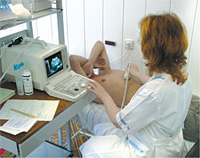
Start going to school a child may not earlier than after 3—4
months after the start of a sharp attack of rheumatism. In many ways this term
Depends on the volume of heart damage and the flow of illness. Permission to
Visiting classes gives a cardiorevmatologist. The doctor also relieves
child from physical education for a period of at least 2—3 years. Children,
suffering from rheumatism, at school are exempt at all from all sorts of
physical exertion, including cleaning classrooms and t. D.
If necessary, the child is given another day off a week.
Preferably during the first year after the disease refuse to participate
child in various circles and amateur activities.
Rheumatism child can not along with classmates
participate in educational and extracurricular work, it is quickly tired. except
that usually it turns out that the child after a long disease
significantly lags behind his classmates. All this, of course,
adversely affects the psyche of the child and can cause him
inferiority complex. And it can happen that the child in general
Makes interest in classes. Yes, and the road to school can tire
child. In connection with all this, the child suffered rheumatism,
It is advisable to send to study at 1—2 years in a special sanatorium
school. Despite the fact that the common school acts
general education school program, training in it has a number
Advantages: The duration of lessons is not 45, and 40 minutes, in
There are two big changes; Children for a long time
Fresh air, including changes. As a result, children are not
tired by the end of classes. School has a solid routine of the day,
Provided regular nutrition, day rest, all children are engaged
physical education according to a special program and in accordance with the need
Treatment (mud, physiotherapy, medication treatment and
T. D.).
If your child is not in a sanatorium school, but lives at home,
Be sure to perform all prescriptions of the cardiorevmatologist. This is
absolutely necessary to prevent a new attack of rheumatism.
Usually during the first 2—3 years after rheumatic attack child
To prevent streptococcal infection, injections are prescribed
Penicillin durability preparations (Bicyllin), which
Make 1 time in three weeks. In easier cases, treatment courses
Bicillin is carried out within 6 weeks in spring and autumn, since it
time danger sick rheumatism the biggest. Like the admission of all
drugs, the use of bicillin can cause allergic reactions.
Make sure whether the child does not complain after the injection,
Does it have a temperature, does not appear whether the skin rash appears. At
The emergence of these phenomena must report them to the attending physician.
Moderate physical education classes have a beneficial effect on
Cardiovascular system. But since the child is released 0T
Physical education at school, you will have to drive it into the Cabinet of Medical
Physical education in the clinic.
The treatment of chronic infection foci is important
contribute to the emergence of not only the first attack of rheumatism, but also
Exacerbations of the disease. Therefore, 1 — 2 times a year to drive a child to
tooth doctor and doctor ear, throat and nose. Dangerous for exacerbation
rheumatic process and transferred diseases. About all
Meaning the diseases immediately inform the cardiorevmatologist,
which examines the child against rheumatism and if necessary
Appoint additional treatment.
After an acute attack of rheumatism, a child for 3—4 years can not be vaccinated. Exemption from vaccinations gives your attending physician.
From recreational activities should be mentioned Summer Sanatorium
Pioneer camps. A year after the acute attack of children suffering
rheumatism, you can direct on sanatorium treatment for all-Union
Resorts (Evpatoria, Kislovodsk and DR.). In solving these problems you also
Cardiorevmatologist will help. Remember that every new attack of rheumatism
still stronger the heart and in connection with this can cause
Disabled children. Therefore, strictly follow the prescriptions
attending a doctor, especially carefully follow the day and diet
child, secure him regular stay in the fresh air and
Regularly come with him on the control of the cardiorevmatologist.

